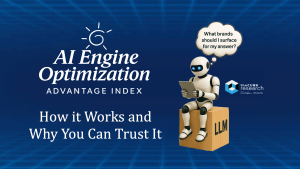TheCUBE Research just dropped another cloud market share analysis. For a deep dive Breaking Analysis read Dave Vellante’s latest research analysis and deep research on cloud market share by the big players.
Note: Definitely subscribe to his Breaking Analysis if you want a weekly dose of high frequency insights. This week he drills down deep into cloud players positions in the market.
The Generative AI cloud game has transformed from a hyped up concept to an omnipresent force driving industries worldwide. Cloud computing now extends its power and reach into hybrid on-premises models, edge workloads, telco markets, and even space. With the global cloud market projected to surpass $1 trillion by 2025, the battle for market share among industry leaders is heating up.
The Expanding Cloud Universe: Market Breakdown
The cloud market can be categorized into three primary segments: Infrastructure-as-a-Service (IaaS), Platform-as-a-Service (PaaS), and Software-as-a-Service (SaaS) + Professional Services. While the IaaS and PaaS markets are dominated by hyperscalers like AWS, Microsoft, and Google, the SaaS and professional services segment introduces a more fragmented competitive landscape.
Total Cloud Market Projections (from theCUBE Research:
- Market Size: The total cloud market is expected to reach $875 billion by 2024, growing at a CAGR of 17.3% from 2022 to 2024.
- SaaS and Professional Services: This segment is estimated to generate over $500 billion in 2024, with professional services accounting for slightly more than 50% of that revenue.
Market Leaders and Competitive Dynamics
AWS: Unmatched in IaaS
- AWS holds 36% of the IaaS and PaaS market, maintaining its leadership with innovative solutions like Amazon SageMaker, Bedrock, and custom silicon chips (Tranium 2 and Inferentia).
- The company’s focus on generative AI and sustainable computing provides significant advantages for enterprises prioritizing performance and cost-efficiency. AWS continues to demonstrate strong growth in infrastructure services, which remain the foundation of its dominance.
Microsoft: A SaaS Powerhouse
- Microsoft leads the SaaS and professional services market, with a 10.3% share, far ahead of competitors like Google (2.8%) and Oracle (1.5%).
- Azure’s integration with enterprise tools like Office 365 and its hybrid cloud solutions through Azure Arc position Microsoft as a trusted provider for traditional enterprises navigating digital transformation.
Google: Niche Strengths in AI and Analytics
- Google Cloud captures 7.9% of the IaaS and PaaS market, leveraging its expertise in AI and data analytics to differentiate itself.
- Its open-source tools and developer-centric approach attract businesses seeking advanced machine learning capabilities, though its broader enterprise adoption remains a work in progress.
Oracle: Rapid Growth Through AI Integration
- Oracle’s focus on integrated AI solutions has accelerated its growth, making it a rising contender in the cloud ecosystem.
- The company’s SaaS offerings cater to industries like finance and healthcare, but its opaque reporting methods make apples-to-apples comparisons challenging.
The Role of “Other” Players
- In the IaaS and PaaS markets, “Other” vendors account for 20% of the market, with Alibaba, Tencent, Huawei, and IBM making up 14%.
- In the SaaS and professional services category, smaller players and niche providers dominate, collectively accounting for 75% of the market share.
Growth Trends Shaping the Cloud Landscape
- Generative AI as a Growth Driver: Hyperscalers like AWS, Microsoft, and Google are racing to offer scalable AI solutions, with AWS leading the charge through its modular generative AI stack.
- Hybrid and Edge Computing: Enterprises increasingly demand solutions that integrate cloud capabilities with on-premises and edge environments, a trend Microsoft and Oracle are capitalizing on.
- Sustainability as a Differentiator: AWS’s investments in “green computing” and energy-efficient hardware are setting new standards for environmentally responsible cloud operations.
- Fragmentation in SaaS: While hyperscalers lead in infrastructure, the SaaS market remains fragmented, with significant revenue captured by non-hyperscalers like Salesforce, ServiceNow, and Workday.
What This Means for Businesses
For business leaders, the evolving cloud market presents both opportunities and challenges:
- Choosing the Right Partner: The major players each bring unique strengths. AWS offers depth in infrastructure, Microsoft excels in SaaS and hybrid solutions, and Google leads in AI innovation.
- Leveraging AI: Generative AI tools are no longer optional but essential for businesses aiming to enhance productivity and drive innovation.
- Navigating Costs and Sustainability: As cloud adoption grows, enterprises must consider not just performance but also cost transparency and environmental impact.
The Generative AI Opportunity for Cloud Providers
The generative AI wave presents a significant opportunity for all cloud providers to establish themselves as strategic enablers of AI-driven transformation. By offering an integrated stack of infrastructure, flexible model selection, and application delivery, cloud players must focus on addressing diverse enterprise needs, from scalable AI training to real-time inference. Innovations in cost optimization, model flexibility, and real-world applications will be crucial to delivering value in this rapidly evolving landscape and ultimately determining the winners and losers.
Furthermore, the massive upside for cloud providers lies in their investments in sustainability and energy-efficient infrastructure. These are not just competitive differentiators but imperatives, reflecting customer priorities for responsible innovation. Moreover, empowering all types of developers—whether through streamlined workflows, productivity tools, or robust ecosystems—remains central to driving adoption and fostering innovation with AI. In this new hyper-competitive era of cloud computing, the ability to align with enterprise priorities while scaling generative AI solutions responsibly will define the leaders of tomorrow.
Bottom Line: Cloud’s Future Is Bright and Fragmented
The cloud’s trajectory toward a $1 trillion market underscores its central role in shaping the future of business. While AWS, Microsoft, and Google dominate the infrastructure landscape, the fragmentation in SaaS and professional services highlights the diverse opportunities within the cloud ecosystem.
For enterprises, the key lies in aligning their cloud strategy with their unique needs, balancing innovation with cost-efficiency, and staying ahead in a market where competition is fierce, and the stakes are higher than ever.


